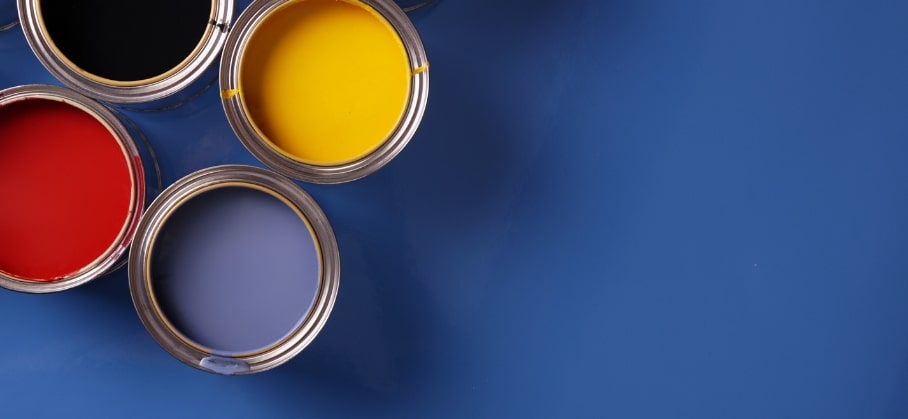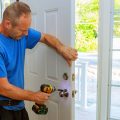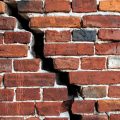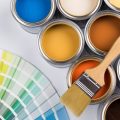
Choosing the type of paint is as important as choosing its colour. Even more. Different surfaces require different types of paint. The type of paint you choose has a huge impact on the overall look of the area you’re painting.
You need to take some things into consideration first, such as whether you’re painting interior or exterior, the material type of the surface, what is the look you want to achieve etc.
Read on to learn more about the different types of paint, sealers and primers to ensure choosing the best fit for your needs.
What are the different types of paint?
There are many types of household paint. They can be divided into two main categories – oil-based and water-based paint.
Water-based paint is opaque, dries quickly and is mainly used for interior surfaces. Oil-based paint is long-lasting, needs a longer time to dry, and is mainly used to paint exterior surfaces.
Interior paints
Interior paints come in a variety of colours, textures and gloss. The sheen of the paint is the amount of light that reflects from the surface. Consider also whether the area you’re painting will be subject to frequent washing, scraping or hitting with heavy furniture.
Whitewash
Whitewash is a solution made from slaked lime and powdered chalk. Whitewashing is easy to DIY, it’s toxin-free, and it’s a very cheap painting option used for whitening interior walls and ceilings. It can be used on different surfaces such as brick, concrete, drywall, wood, and even painting furniture.
However, whitewash is not a paint, and that means that it does not have a solid colour. It can be used for whitening surfaces. If the surface is a different colour than white, then it won’t be able to cover the existing colour completely.
Matte paint
Matte paint is the most used type of paint for interior walls and ceilings. The colour is flat, non-reflective and the texture is rough and grainy. It’s perfect for surfaces where you don’t want reflections and distractions. The paint can also cover imperfections on the walls.
Matte paint is cheap and easy to be applied. You can use a roller or brush to do so. If the colour is solid, it often needs more than one coating of paint to achieve stable covering. The paint can be easily cleaned with a damp cloth, but matte paint requires regular retouching over the years.
Flat enamel paint
Flat enamel paint has a similar texture to matte paint, but it’s more durable and long-lasting. The finish is flat and non-reflective, but the paint can be easily cleaned even from stubborn stains and scratches. It’s an excellent choice for high traffic areas or if you have children or pets. It’s perfect for freshening up kitchens and freshening up bathrooms where you often need to clean the walls.
Eggshell paint
Eggshell paint finishes actually look like an eggshell surface. The paint has less sheen than satin paint, but it’s not as flat as the matte paint. The paint is low-reflective and can provide a classic, smooth looking surface. This type of paint can be found in the interior walls of a lot of residential homes – living rooms, dining rooms, bedrooms, but not in kitchens and bathrooms. The paint can also be used on wooden furniture and doors.
The paint is low-cost, fast drying and produce a low amount of odour when being applied. It’s easier to clean than matte paint because of the slight gloss finish, but still, it’s not recommended to be used in high traffic areas or where kids or pets play because it can get scratched or damaged easily.
Satin paint
Satin paint finishes are glossier than eggshell finishes. The finish has between matte and glossy look. Satin paint is designed to endure washing and cleaning, making it a perfect choice for high traffic areas.
The paint is often used on wooden furniture, doors and can be used for wall and ceiling painting anywhere inside your house. However, it’s not recommended to be used on surfaces with imperfections because the glossy finish will make these imperfections more conspicuous.
Semi-gloss paint
Unlike satin and eggshell paints which have a slight gloss, semi-gloss paint has a more noticeable sheen. Semi-gloss paint has a reflectability of 40-70%. Semi-gloss paint is easy to wash and clean. It produces a sheen that is not too bright when reflecting the light from the surface. The paint is also stain and scratch-resistant.
Semi-gloss paint can be used outdoors and indoors due to its high durability. Because of its strong gloss, imperfections are more apparent if you cover this type of paint surface. Have this in mind before choosing whether or not to use it.
Gloss paint
Besides the matte paint, gloss paint is one of the most popular interior paints. The paint is perfect for wooden furniture, cabinets, doors, walls and even outdoor surfaces.
You should be careful when applying to make sure the paint is evenly spread on the surface. Usually, it takes more than 1-2 coats of paint to achieve the best looking results. Like the other glossy paint, imperfections can become more apparent. Still, another downside is that surfaces with this type of paint must be cleaned regularly because fingerprints and other stains are easily visible.
Leave the painting job to the professionals
Hire expert handyman
Exterior paints
Cement paint
Cement paint is water-based paint and is used to cover cement surfaces, mainly outdoors. It’s actually made of a mixture of powder cement and other additives that colour the paint. Unfortunately, the colours available are limited.
The paint is really cheap. Because of its water base, the paint is not as durable and as lost-lasting as other options. The colour usually the last couple of years. The paint is powder, and before usage, you should add water and constantly stir the mixture while painting with it. The paint should be used as quickly as possible. If you leave it for more than 2 hours, it can get hard as a rock.
Bituminous paint
Bituminous paint is also known as asphalt. The paints are black, sticky and semi-liquid, semi-solid. The paint can be applied on outdoor surfaces such as steel and iron structures, structural metal fabrications, and concrete surfaces. It can also be used as insulation coating under tile roofs. It can also be used on gutters, pipes, fences and railings.
The paint is strong, highly durable and waterproof. It protects the painted surfaces from rust, weather damages, UV light and harsh chemicals used in construction.
Need someone to help you with the paint?
Book a professional painting service!
You can book our handyman services in Melbourne, Sydney, Brisbane and Perth!


